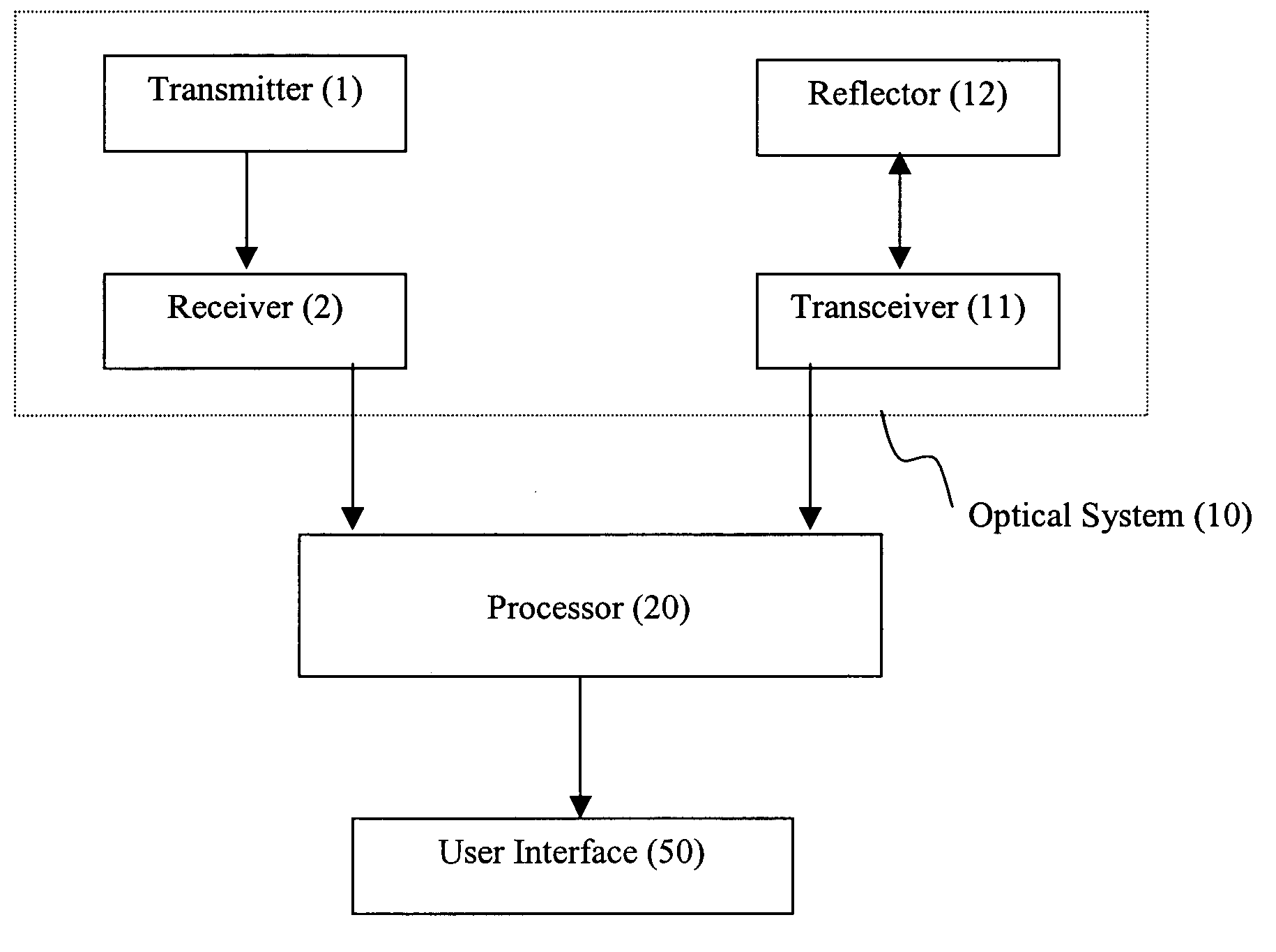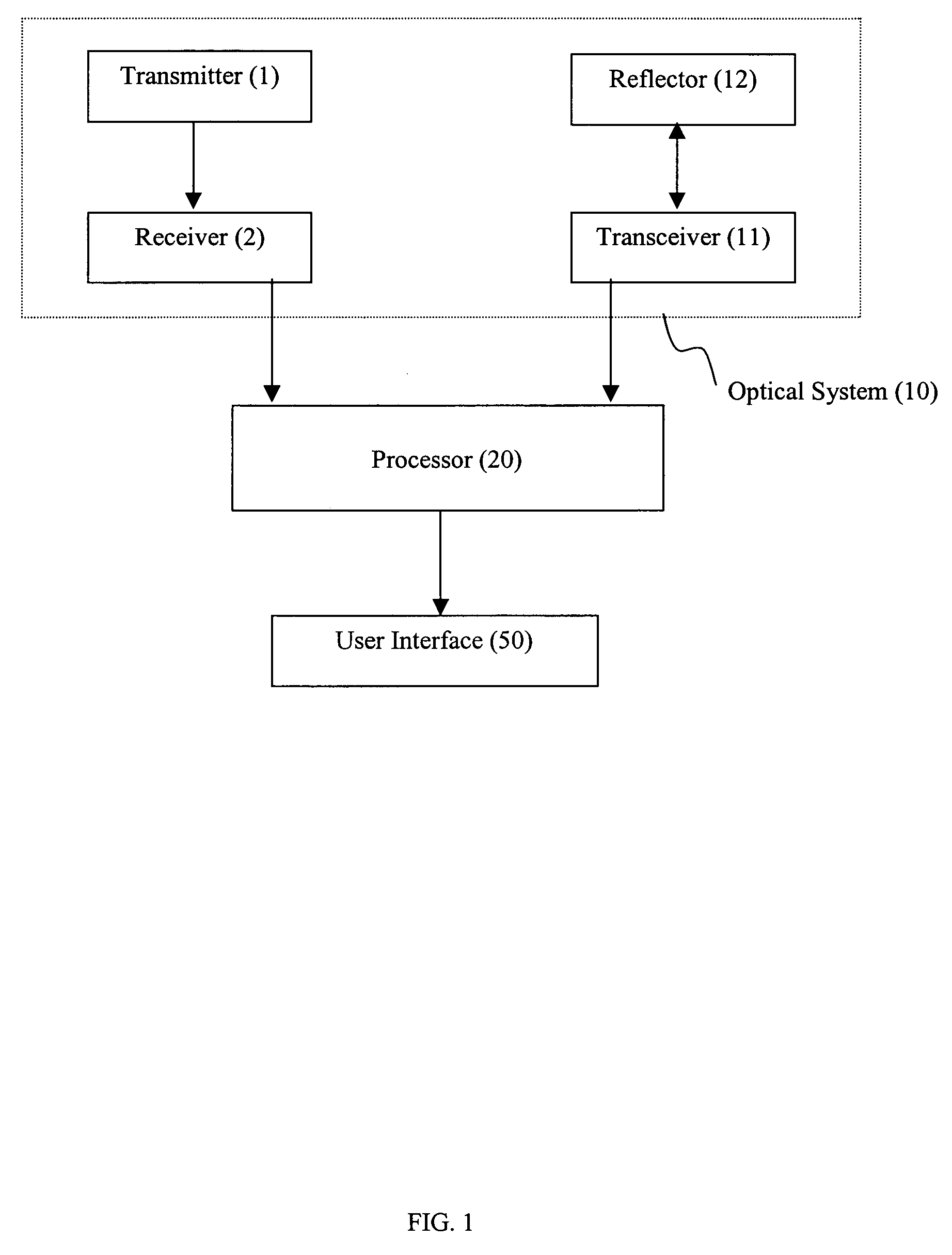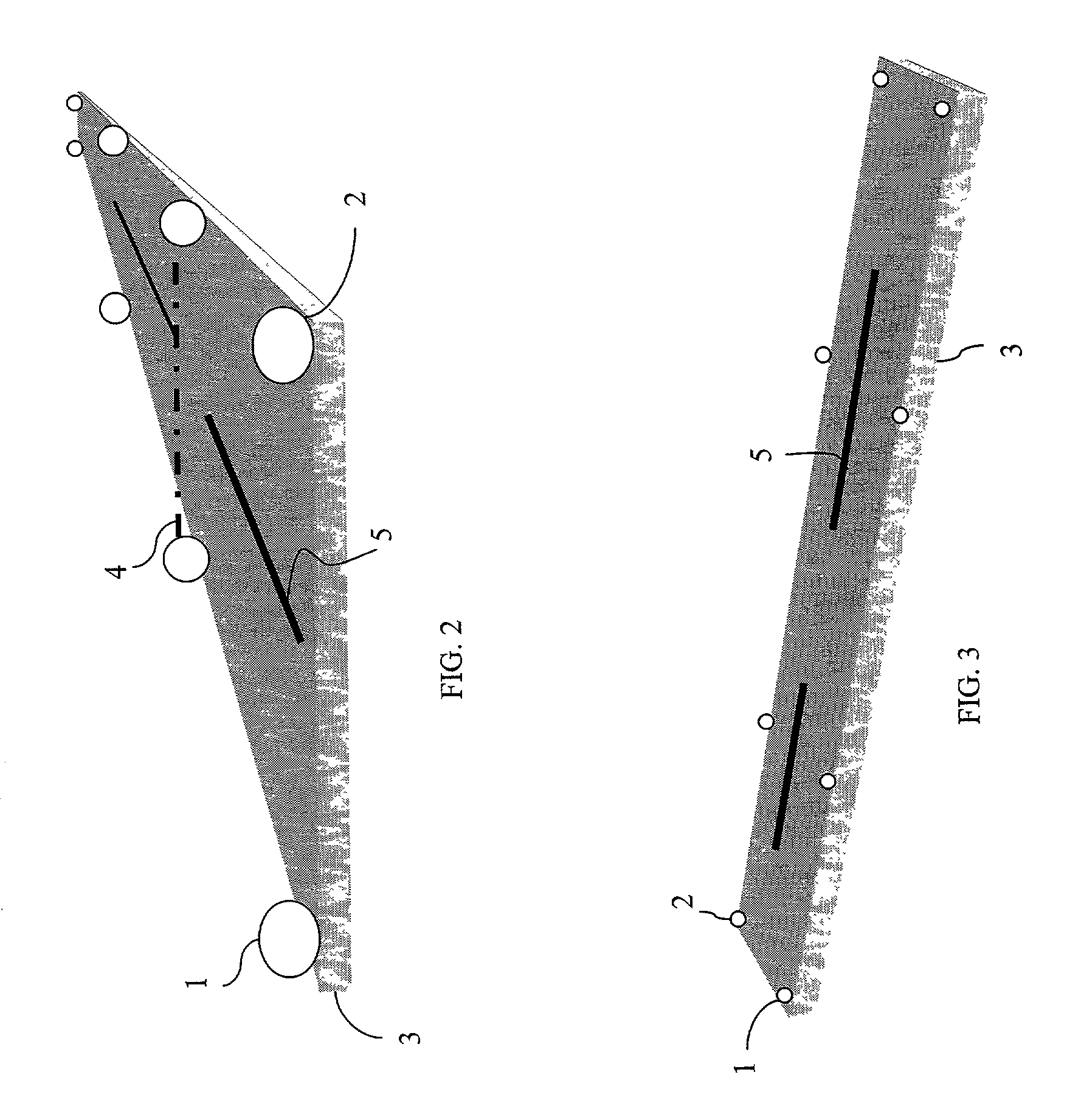Apparatus and method for detecting objects located on an airport runway
a technology for airport runways and objects, applied in the direction of aircraft traffic control, burglar alarm short radiation actuation, instruments, etc., can solve the problems of aircraft damage, aircraft death, aircraft damage, etc., and not eliminate the hazard of unseen objects on the runway
- Summary
- Abstract
- Description
- Claims
- Application Information
AI Technical Summary
Benefits of technology
Problems solved by technology
Method used
Image
Examples
example 1
[0115]Reference is now made to FIG. 2 illustrating a 3-dimensional frontal view of the airport runway surface 3, with the center line 5 marking the width in an equal distance to both edges of the airport runway surface 3. The optical laser transmitter 1 which supplies the optical laser 4 to the optical laser receiver 2 is preferably located at the edge of the airport runway surface 3.
[0116]In the different configurations of embodiments that follow, transmitter 1 can also be used as a transceiver 11 with respect to receiver 2 and reflector 12. The location of the optical laser receiver 2 can be located on the opposite side facing back in the direction of the optical laser transmitter 1. Both the optical laser transmitter 1 and optical laser receiver 2 are positioned along the width down the length of the entire airport runway surface 3.
[0117]FIG. 3 illustrates the side view of a 3-dimensional airport runway surface 3 with the center line 5 marking the width in an equal distance to bo...
example 2
[0118]FIG. 4 illustrates a top view of the airport runway surface 3 with optical laser transceivers 11 and optical laser reflectors 12 on opposite sides of the airport runway surface 3. This configuration illustrates the arrangement of the optical laser 4 as magnified in FIG. 4A, which shows the configuration covering the width of the runway area specified. The optical laser 4 may be constantly traveling through several different planes while passing over the width of the airport runway surface 3.
[0119]FIG. 5 illustrates a top view of the airport runway surface 3 showing the location of optical laser transmitters 1 on one side of the airport runway surface 3, and optical laser receivers 2 on the opposite side. The laser beam 4 as magnified in FIG. 5A illustrates the configuration covering the width of the area specified showing the direction from one side to the other and constantly traveling through several different planes.
example 3
[0120]FIG. 6 is a top view of the airport runway surface 3 with optical laser transceivers 11 located on each end of the airport runway surface 3 on the center line 5 marking the width in an equal distance to both edges. Optical laser reflectors 12 are present on both sides of the runway surface 3 covering the length and width of area specified by reflecting optical lasers 4 from optical laser transceivers 11 in different directions, for example, three different directions, while constantly traveling through several different planes.
[0121]FIG. 6A is a simplified top view of the airport runway surface 3 illustrating where optical lasers 4 provide protection for aircraft within landing and take off sections 9 of the airport runway surface 3.
PUM
 Login to View More
Login to View More Abstract
Description
Claims
Application Information
 Login to View More
Login to View More - R&D
- Intellectual Property
- Life Sciences
- Materials
- Tech Scout
- Unparalleled Data Quality
- Higher Quality Content
- 60% Fewer Hallucinations
Browse by: Latest US Patents, China's latest patents, Technical Efficacy Thesaurus, Application Domain, Technology Topic, Popular Technical Reports.
© 2025 PatSnap. All rights reserved.Legal|Privacy policy|Modern Slavery Act Transparency Statement|Sitemap|About US| Contact US: help@patsnap.com



